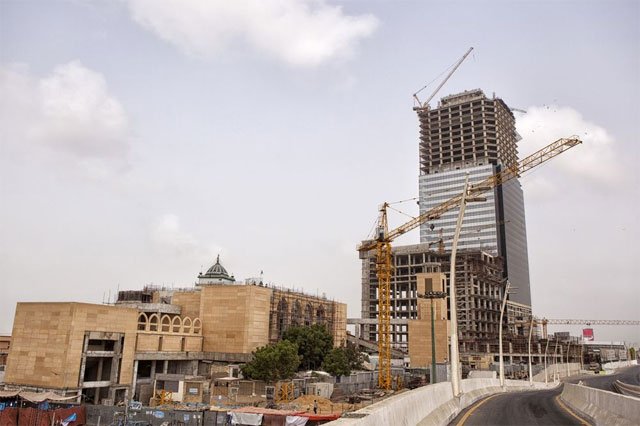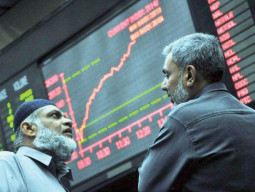
The draft outline of the 12th Five-Year Plan seems to be prepared on 20th century economic theories and developments, as it is silent on the Fourth Industrial Revolution that is taking place in the world which revolves around new technologies and artificial intelligence (AI).
Artisans gaining economic prosperity
The decision to make the next five-year plan appears ill-timed, as the incumbent government is going to complete its constitutional term in the next four months. Also, the federal government could not achieve the targets set under the 11th Five-Year Plan 2013-18 due to lack of control over provinces’ decision-making and ill-prepared plans.
The federal government also lacks a mechanism to implement the Five-Year Plan. Only the implementation plan of Framework for Economic Growth (FEG) was considered one of the better policy documents prepared by the federal government. But the Planning Commission moved away from this FEG after change in the government in 2013. Former deputy chairman Dr Nadeemul Haq had made the FEG.
The Planning Commission has requested the NEC meeting to prepare draft of the Five-Year Plan for the period of 2018-2023, according to officials of the Planning Commission. This will coincide with the new term of the next governments at the centre and in the provinces.
The NEC is the country’s highest constitutional forum responsible for economic and development decision making. The prime minister chairs the NEC meeting and chief ministers of four provinces, Azad Jammu & Kashmir (AJK) and Gilgit-Baltistan (G-B) are its members.
The NEC meeting is expected to take place next week in which the Planning Commission will lay the outline of the proposed 12th Five-Year Plan. It will seek the NEC’s permission to prepare draft of the 12th Five-Year Plan in consultation with the provincial governments and submit it for consideration to NEC at the time of the budget, according to the officials.
However, in view of the upcoming general elections, the Planning Commission would request the NEC to leave the final approval of the plan on the new government.
The draft outline of the 12th Five-Year Plan shows that the government aims at achieving an average economic growth rate of 6.5% for the period of 2018-2023. This is higher than 4.8% of the last five years’ average.
The services and industrial sectors have been shown as engines of growth with an average growth rate of 7% and 8%, respectively. The average output of the agriculture sector is projected at 4% in the outline.
The government has provisionally projected the total investment to GDP ratio at 19.5% from last year’s 15.8% level.
The federal government wants to prepare the next Five-Year Plan at a time when the governments have moved away from centrally planned economies, except few nations. In the centrally planned economic model, the federal government makes economic decisions rather than the interaction between consumers and businesses.
After the 18th Amendment, the provinces now have greater fiscal and administrative autonomy, which has squeezed the influence of the Centre. Recently, the Sindh government refused to become part of the federal government-sponsored Prime Minister’s National Health Programme.
Provincial priorities
According to the proposed outline of the 12th Five-Year Plan, Punjab will develop deprived regions, ensure universal coverage of health, education and water supply and prevent malnutrition. The country’s largest province will also have to address rapid population growth and develop skills to meet needs of the China-Pakistan Economic Corridor (CPEC).
Sindh is supposed to mainstream its less developed areas and should focus on infrastructure, industrial revival and private investment. It should develop agriculture by improving on farm management, water conversation and seeds standardisation.
For Khyber-Pakhtunkhwa (K-P) integrated development through socio-economic prosperity is desired. The K-P government should channel funds towards high productivity sectors like energy, industry, housing and roads.
PML-N govt should seek short-term borrowing from IMF
According to the proposed outline, Balochistan will have to develop at least 50 medium to large dams for irrigation and water security purposes, setup 50MWs coal-based power plants and invest in solar power and livestock. The province should also convert its 30,000 tube-wells to solar energy. The achievement of Universal Primary Education and setting up trauma centres on national highways are the other goals for Balochistan.
The AJK government will have to ensure better water management, increase allocations to create road links, tap environment friendly energy sources and focus on education sector.
G-B’s priorities should be development of transport sector, tourism and agro industry, reduction in high poverty levels and reforms in health, education sectors.
Published in The Express Tribune, February 15th, 2018.
Like Business on Facebook, follow @TribuneBiz on Twitter to stay informed and join in the conversation.



1730959638-0/trump-(19)1730959638-0-165x106.webp)













COMMENTS
Comments are moderated and generally will be posted if they are on-topic and not abusive.
For more information, please see our Comments FAQ